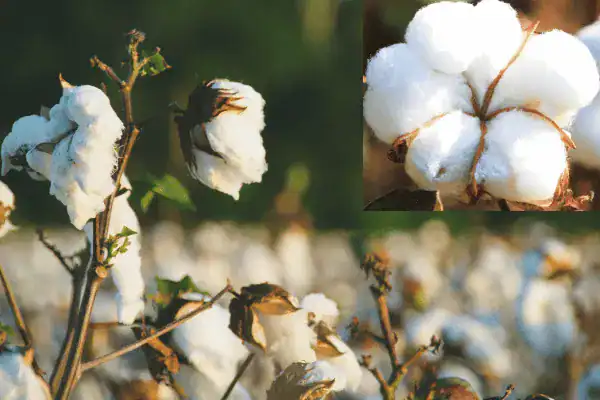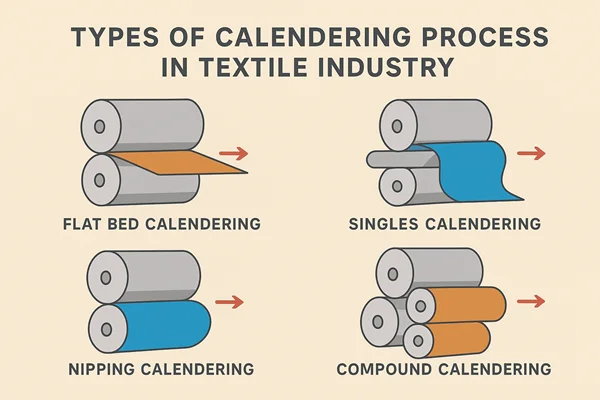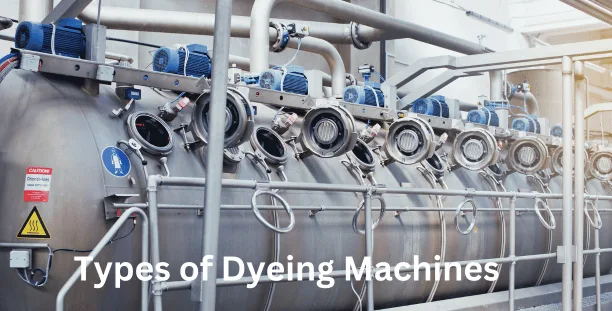Physical and Chemical Properties of Cotton Fiber
Cotton is the most used fibre for making different types of fabric throughout the world. It is cellulose fibre. It has too much popularity due to its various uses in textiles. It also provides comfort in all the seasons. The cotton plant is a shrub native to tropical and subtropical regions throughout the world, including Africa, the Americas, and India. It should be noted here that the greatest diversity of wild cotton species has been found in Mexico, followed by Africa and Australia. Some important Physical and Chemical Properties of Cotton Fiber are explained in this article, and the Properties of Cotton Fiber for the Spinning Process.

Physical Properties of Cotton Fiber:
Cotton fiber has great importance in textile companies. The fabric produced by using cotton fiber has so many advantages. Important Physical Properties of cotton fiber are pointed out below:
- If the cotton fibers are seen through the microscope, they show a formation of a shape like a fine braid.
- The natural strands spread through the whole length.
- If the cotton is fine, the number of strands is greater.
- In the sea land cotton, they are about 74 per cm, in American cotton, they are about 40-48 per cm.
- Due to the strands, the fibers get intertwined altogether during spinning, it prevents the slipping of fibers when they are turned into yarn. It also helps to increase the elasticity strength of yarn, by making the thread puffy.
- The cross section of the fiber forms a flat pipe shape, like a pressed macaroni. Air is contained in the hollow part inside.
- Cotton has warming properties due to this air, and it also increases the electric insulation degree.
- The compressed cotton fiber stretches as if a pipe-shaped rubber balloon is bloated.
- The natural strands and inner hollow part are developed in a mature fiber.
- The semi-mature (the substance, which has withered away before the cotton ball has matured sufficiently) fibers have some traces of them, but they are not seen in a non-matured fiber.
- Apart from the above point, the drawbacks of the fiber, which is not completely mature, are that the fiber is weak in strength and difficult to dye.
- During its growth, if the cotton ball faces light frost and then if there is clear weather, the cotton changes to light cream color. Again, if there is clear weather after heavy snow, the cotton turns to dark crimson color. This is called as Red Cotton. It is used in the low quality cotton mattresses. This has not only bad color but it is also weak in strength and therefore not used for spinning.
- Raw cotton is comparatively strong in moisture absorption and so official moisture regain of 8.5% is recognized in trading. Accordingly, the weight after adding 8.5% to the anhydride volume is the correct volume in the trade. However, in actual trading, just as in the case of silk, strict corrections are not done. But, the business is done on the weight of fiber in natural condition.
- When the cotton fiber absorbs moisture, it enlarges about 10% in strength and about 25% in elongation as compared to its dry state.
- When the cotton fiber, containing a suitable degree of moisture, is heated to about 100°C, it becomes extremely soft and its shape can be modified easily. Even after cooling, it has the property of preserving this modification for a relatively long period. This property is used while carrying out the tentering process, during the fabric finishing. After washing, the creases are pressed or folds are set with the help of ironing calendars.
Chemical Properties of Cotton Fiber:
Some important chemical properties of cotton fiber are listed below:
- The main ingredient of cotton fiber is cellulose, which is a compound of carbon, hydrogen, and oxygen,n and it occupies almost 90% of the total weight. The remaining is comprises by moisture, wax, fats, ashes and pigment, etc.
- Wax adheres to the surface of cotton fiber in a thin film-like state, and it plays the role of protecting the fibers.
- Due to this water protective effect, even after putting cotton in water (same in case of cotton yarn, fabric also) it does not get wet immediately.
- The wax melts at around 70°F, and it gives a lubrication characteristic to the fiber surface. Therefore, in the spinning process, it helps to slide the fiber while drafting or attenuating. If the temperature in the spinning process is not maintained at more than 70°F, it causes spoiling of the condition of spinning.
- If the cotton fiber is immersed in Caustic soda concentrate, the fiber inflates and the natural strands are lost, and the length gets compressed.
- If the cotton is immersed in a stretched condition, which would not allow compression, it turns to a lustrous fiber. The fiber, which undergoes this process, is termed as Mercerized cotton or silk.
- Strong acid damages the fibres. Concentrated sulphuric acid and hydrochloric acid damage the fibre. But weak acid does not damage the fibre.
Grading of Raw Cotton:
In order to grade the quality of raw cotton, the rating is done according to the level of the length, fineness, strength, color matching, luster, natural strands, and impurities in the fiber. These are divided in different ways according to the production land. However, for example, the grading of American cotton can be shown here as follows:
- Middling fair,
- Strict good middling,
- Good middling,
- Strict middling,
- Middling,
- Strict low middling,
- Low middling
- Strict good ordinary
- Good ordinary
International Market Price of Raw Cotton:
The trade market price of American cotton takes Middling, which is at the center of grading stages, as the standard, and it is shown in the units of how many cents and how many points (1 point is 1/100 or 1 cent) for 1lb. About the objects of other grades than Middling, the price increases in how many cents from the Middling or the price decreases by how many cents from its decided in advance.
In the Japanese domestic market, the New York market price is taken as standard. To it, the land transportation fare till the ship loading, miscellaneous expenses, marine transportation fare, marine insurance etc. are added, and the price of Japan post landing is calculated in American currency. Then the buying is done at the market price in cents till delivery up to Japan shore (CIF).
This is converted to Yen and the landing expenses from the ship, the expenses required for customs clearance (import tax is free), transportation charges up to the factory, insurance amount, and commission on imported goods are added to it. Thus, the price of the amount of yen till factory delivery is calculated.
Regarding other raw cotton other than American cotton, similarly various expenses are added to the production land market cost (for example, the Bombay market price in case of Indian cotton or Pakistan cotton), and the Japanese domestic market price is calculated.
Properties of Cotton Fiber for Spinning Process
Properties of Cotton Fibre Considered by Cotton Spinners:
The following characteristics of cotton fibres are considered for cotton spinning:
- Fibre color,
- Fibre length,
- Fibre maturity,
- Fibre fineness,
- Fibre elongation,
- Fibre length uniformity,
- Fibre strength,
- Fibre cleanness.
All the above properties are explained in below:
1. Fibre color:
Color is particularly important as a measure of how well a fabric or yarn will bleach or dye. Instrumental techniques for determining the color of the sample have only now been adopted in the textile industry. HVI measurement of color provides reasonably accurate results of average yellowness and reflectance in a sample.
2. Fibre length:
Staple length is the average length of spinner spinnerable fibre. It is one of the key properties of fibre. It should be noted here that the count, quality, strength, etc. are totally dependent on sthe taple length of fibre. If staple length increases, then the quality of yarn decreases.
Fibre length influence on the below matters:
- Spinning limt,
- Productivity,
- Yarn evenness,
- Yarn strength,
- Handle of the product,
- Yarn hairiness,
- Lusters of the product.
Fibre length measuring unit:
- Staple length,
- 2.5% span length,
- Effective length,
- 50% span length,
- Upper half mean length,
- Upper half length,
3. Fibre maturity:
The maturity of cotton fibre is totally dependent in terms of the development of cell wall. It should be noted here that, a fully mature fibre has a well developed thick cell wall where as an immature fibre has a very thin cell wall.
4. Fibre fineness:
Fibre fineness is totally influences the number of fibres in the cross section of yarn. Finre fineness varies depending on the below matters:
- Yarn strength,
- Yarn evenness,
- Spinning limit,
- Productivity,
- Yarn fullness,
- Luster,
- Handle,
- Drape of the fabric product.
5. Fibre elongation:
The fibre elongation should be at least 1-2% and preferably slightly more. The higher crease resistance of wool compared with cotton arises for example from the difference in their elongations: cotton 6-10% and wool 25-45%.
6. Fibre length uniformity:
Length uniformity impacts on the following matters-
- Ends down,
- Yarn irregularity,
- Higher wastage in combing,
- Higher fly liberation in spinning, weaving, and knitting.
7. Fibre strength:
If fibre strength is high, then yarn and fabric strength also increase. Minimum strength for a textile fiber is approximately 6CN per Tex (about 6km breaking length).
8. Fibre cleanness:
Cotton fibre contains different types of foreign matter. Those are-
- Vegetable matter (Seed fragments, leaf fragments, stem fragments ,etc.)
- Mineral material (sand, coal, dust),
- Other foreign matters (metal fragments, packing materials, cloth fragments).



